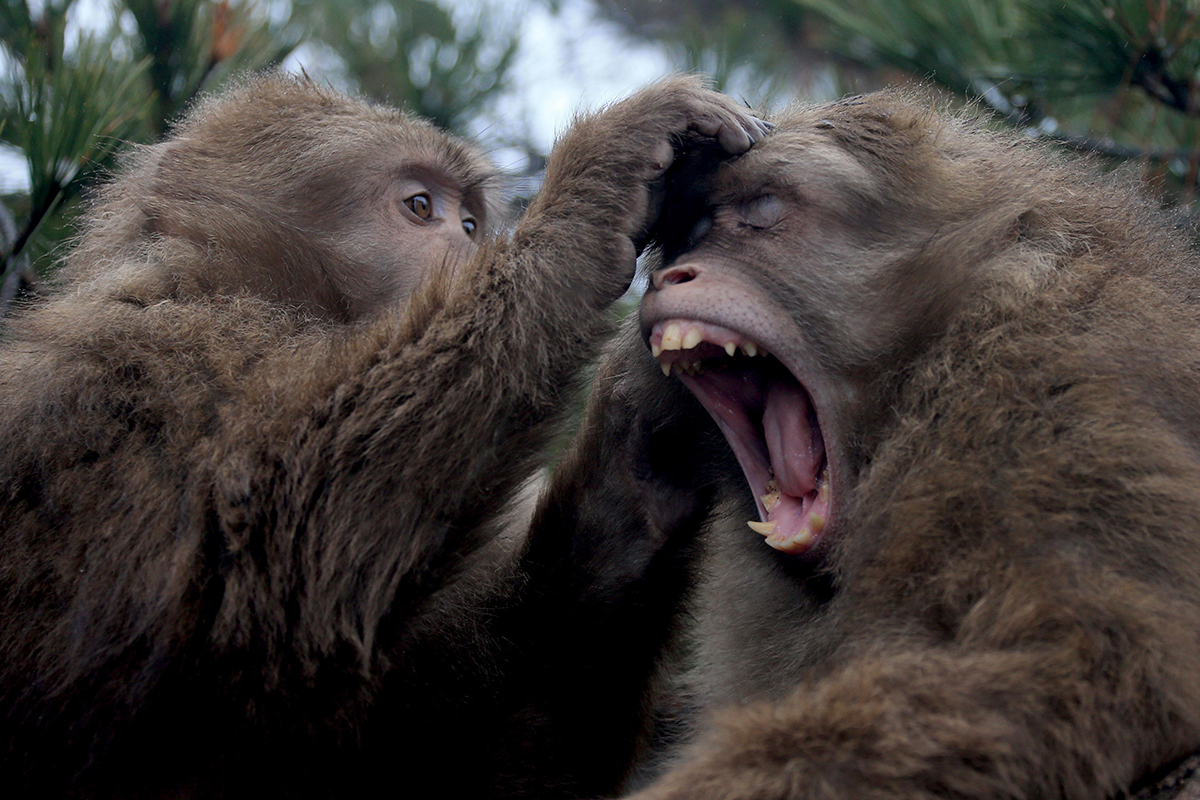
Visual China Group/Getty
By Andy Coghlan
Ooh, ooh, ooh, ee, ee, ee! Shouting monkeys may have more sophisticated vocal abilities than we give them credit for.
It seems that the anatomy of their vocal tract is theoretically capable of producing the five basic vowel sounds on which most human languages are based – and these could be used to form intelligible sentences.
For example, listen to what a monkey asking “Will you marry me?” would sound like in the audio file below:
Advertisement
The results add to a growing body of evidence that some monkeys and apes can mimic or generate rudimentary sounds needed for speech-like communication.
“No one can say now that there’s a vocal anatomy problem with monkey speech,” says Asif Ghazanfar at Princeton University, and co-leader of the study team. “They have a speech-ready vocal anatomy, but not a speech-ready brain. Now we need to find out why the human but not the monkey brain can produce language.”
Previous experiments to explore whether monkeys possess the vocal tools needed to speak relied on analysis of plaster casts of a macaque’s vocal tract.
Now, Ghazanfar and his colleagues have used movies and still X-ray images of the vocal tract of a live male long-tailed macaque called Emiliano.
With the help of a barium-based contrast agent, they created visual profiles of Emiliano’s entire vocal tract as he made various sounds and calls. And by imaging the tract as he ate and swallowed food, they could measure the limits to which the vocal tract could stretch.
From 99 basic tract configurations that they observed, the researchers computed the sounds and frequencies these monkeys would in theory be capable of producing, and compared them with those made by human vocal tracts.
By doing this, they were able to reconstruct what it would sound like if Emiliano said: “Will you marry me?”
They also showed that Emiliano had the anatomical capability to form the five basic vowel sounds on which most human languages are based. When they played the simulated sounds back to 10 human volunteers in sequences, the volunteers correctly recognised 90 to 98 per cent of them – suggesting that if monkeys could make the sounds, humans would recognise them.
Speech-ready
“What we’ve discovered is that the monkey vocal anatomy is capable of creating speech intelligible to us,” says Ghazanfar. But, he says, the macaques lack a speech-ready brain to control it.
The team says its study also implies that the evolution of human speech capabilities required neural changes rather than modifications to vocal anatomy.
Other researchers in the field say the study adds to the growing evidence that monkeys possess the equipment to create speech-like sounds.
“They have gathered the type of data that confirms that monkey vocal tracts are speech-ready,” says Adriano Lameira at Durham University in the UK, who recently showed that an orangutan called Rocky could mimic human speech.
And Philip Lieberman at Brown University in Providence, Rhode Island, says: “I’ve pointed out for decades that monkeys could talk, with reduced intelligibility, if their brains could learn and execute the motor acts involved in speech.”
But Lameira challenges the idea that monkeys and apes don’t have the brains to be able to produce sounds like we do.
“There’s a growing body of evidence from all great ape species that there are few neural limitations,” he says. “Our closest relatives can vocally learn new vowel-like and consonant-like calls, both in the wild and in captivity.”
Ghazanfar agrees that the evidence for their ability to make speech-like sounds is increasing, but says it is still limited. For example, he says, no monkey or ape comes close to the range of human-speech like sounds produced by one-year-old human babies.
Journal reference: Science Advances, DOI: 10.1126/sciadv.1600723
Read more: Talking gibbonish: Deciphering the banter of the apes
No comments:
Post a Comment